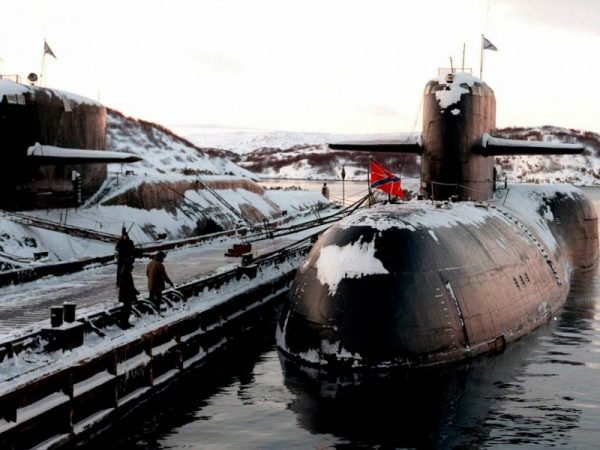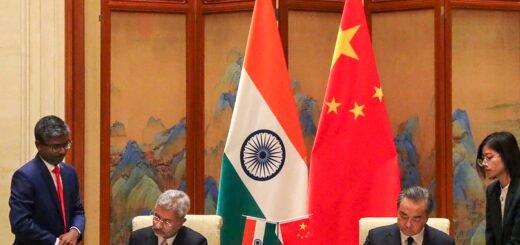European-Russian Relations: Insecurity in the Arctic?

The Arctic is one of the world’s most unique areas. During the Cold War, the Arctic was a place of insecurity with many military and political standoffs between the United States and the Soviet Union. After the Cold War, however, cooperation in the region began to flourish and great power rivalries ceased to exist. One of the main bodies that fostered this cooperation and helped to maintain low tension was the Arctic Council, which addresses issues that may arise in the region. The council comprises of Arctic states – Canada, Denmark, Finland, Iceland, Norway, Russia, Sweden, and the United States – as well as a number of European and Asian observer states but they do not hold decision making powers.
In recent years, however, this cooperation has been put under threat as the Arctic has gone through many unprecedented changes. Temperatures in the Arctic are warming faster than any other place in the world and are thereby affecting sea ice, permafrost, and snow cover. Some estimates suggest that roughly 75% of Arctic ice has melted in the last century. Scientists even indicate that, in the near future, the Arctic could experience ice-free summers. This melting of sea ice has led to opportunities in the region as it is expected to reveal new shipping routes and the possibility for resources such as oil and gas to be extracted. This has resulted in the region being characterized as geopolitically significant and thus attracting attention from many actors. Along with this attention, however, the question of whether the Arctic may be a place of insecurity has re-emerged.

Russian Presence in the Arctic
In the face of these changing conditions, Russia’s large Arctic presence has led to much cause for concern for European countries. In 2007, in line with Putin’s vision of restoring Russia as a great power, Russia re-prioritized the Arctic as a region of focus. Russia’s coastline makes up 53% of the Arctic ocean coastline and its population in the region is approximately 2 million people, which is around half of the people living in the Arctic. Further, the Arctic produces nearly all of Russia’s gas and two-thirds of its oil. Russia is therefore in a powerful position to expand its influence and assert its pre-eminence in the Arctic.
With Arctic sea ice melting, Russia has been able to invest in the region economically. Indeed, one-tenth of all Russian economic investments are in the Arctic. One of the key investments that have been made is in the Northern Sea Route (NSR), a once inaccessible shipping route. It is estimated that during ice-free periods, shipment from Europe to China through this route would be around 40% faster than the traditional Europe-Asia sea route via the Suez Canal. Additionally, increased cooperation between China and Russia has also been concerning for Europe. Recently, Russia has embraced Chinese investment for development projects such as the Polar Silk Road, a shipping route along the Northeast passage. These investments, therefore, indicate Russia’s ambitions to control and monitor developments in the region.

Another major security concern for Europe has been Russia’s re-militarization in the Arctic. Since 2011, Russia has opened up many of their abandoned military bases from during the Cold War era as well as establishing new military bases across the Arctic coastline. They have also modernized surface and submarine components of its Northern fleet. As stated by a NATO official, “In recent years, Russia has boosted its military presence in the Arctic, including by re-opening Soviet-era military bases, deploying new weapons systems and radars and commissioning a new icebreaker fleet. Russia has also set up an Arctic military command. Allies are watching Russia’s Arctic build-up carefully.” Furthermore, there has been concern that Russia could use this military presence to control the actors that enter the NSR.
What’s more, Russia has been growing its nuclear activities in the region. During the Cold War, the Soviet Union stored a number of their nuclear weapons arsenal in the Arctic, used the region as a dumping ground, and carried out nuclear weapons testing. This became an environmental disaster and resulted in a three-decade international clean up. Today, however, it seems that history is repeating itself. In 2019, the Barents Observer noted that there are 39 nuclear-powered vessels or installations in the Russian Arctic, with a total of 62 reactors. In 2035, this is estimated to increase with nuclear-powered vessels or installations being at 74 with a total of 94 reactors. In other words, the Russian Arctic will be the most nuclearized waters in the world.
In 2019, Russia has launched a controversial floating nuclear reactor from the port of Murmansk which CNN termed as a ‘floating Chernobyl’. This floating nuclear power plant, the Akademik Lomonosov, is supposed to provide clean energy to people and businesses across the region of Chukotka. Critics including Greenpeace view this as an extremely high-risk project for the environment. Although it is supposed to be ‘unsinkable’, there is a concern that in severe weather conditions there could be issues or it could hit an iceberg and sink, causing contamination and harming the population. Additionally, Russia has had its fair share of nuclear accidents which has raised safety concerns for this project. In 2019 alone there were 2 deadly nuclear power accidents that took place in the region. In July 2019, there was a fire on a nuclear-powered submarine which resulted in the death of 14 sailors. Not long after, an explosion occurred offshore on the Nyonoksa missile site which resulted in 5 nuclear scientists dead, 3 injured, and radiation being released.

Heightened Tensions: Regular Drills by European and Russian Navies
While the world is focusing on tackling the COVID-19 pandemic and issues related to China, other security risks warrant global attention. The regular drills by European and Russian Navies should be high on this list, with the frequency of these drills increasing in 2020. For example, in May 2020, the U.S. and UK conducted seven days of joint training exercises in the Barents Sea, located off the northern coast of Russia. This was the first time that the U.S. has conducted drills in this Sea since the 1990s. This was perceived as a threat to Russia so in response, Russian Navies called for a series of combat training drills to also be conducted in the Barents Sea, risking heightened tensions in the region.
Moreover, on June 1, 2020, Colonel-General Sergei Rudskoy, Chief of the Main Operational Directorate of the General Staff of the Russian Armed forces, presented a briefing on the level of military activity from European navies and NATO allies. He stated that there has been a clear increase in the number of combat training activities, which have a clear anti-Russian orientation. The largest of these are the “Defender of Europe 2020” exercises, the largest deployment in 25 years. However, this has come to a halt in March 2020 due to the current pandemic. These regular drills highlight the importance of the Arctic region in this time of climate change.
Conclusion
To summarize, the Arctic is experiencing extraordinary environmental changes; with sea ice melting faster and faster, the Arctic is becoming more accessible. Competition between great powers is, therefore, intensifying as more economic opportunities are becoming apparent. As time goes on this can only lead to more military build-up and confrontation if action is not taken. Cooperation in the Arctic is therefore crucial during these multiple changes that are taking place. It is necessary for a platform to be built which focuses on military security issues in the region whereby states are working together to ensure peace.


















